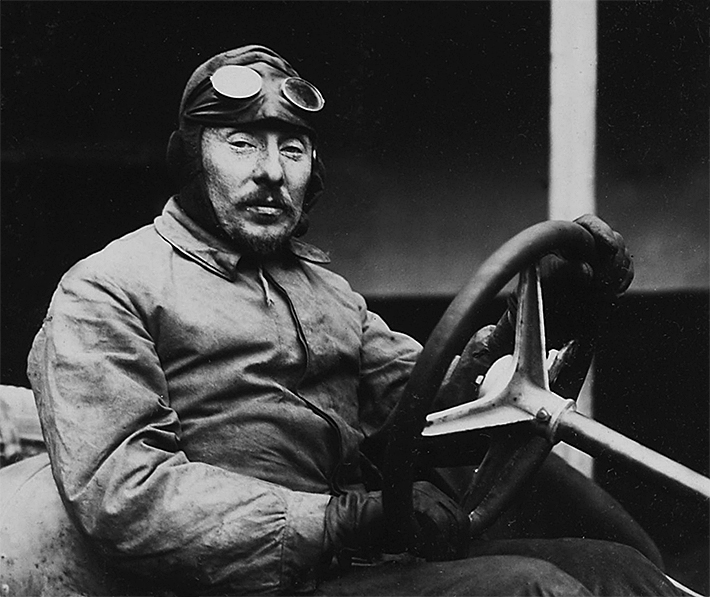Camille Jenatzy Biography
Jenatzy’s family, originally from Hungary had settled in Schaerbeek, Belgium where where his father Constant established Jenatzy – Pneumatic, the first rubber factory in Belgium. In 1865 a son, Camille was born in Brussels. While studying for his civil engineering degree the young Jenatzy entered and won some local bicycle races. France had been a pioneer in lead acid battery technology and in 1881 Charles Jeantaud, assisted by Camille Faure built one of the first commercial electric powered vehicles. Jenatzy like many other prosperous young men of his generation was fascinated by the possibilities of the new motor cars and built a factory, the General Transport Company in France for the manufacture of battery powered vehicles.
Motor racing, as a sport that was exploding in popularity and seemed a natural way to demonstrate the capabilities of an automobile, so Jenatzy entered his first race, the Chantekoup hill climb, in November of 1898. Driving one of his electric cars, Jenatzy set the fastest time of the day, averaging 17 MPH over the muddy 1.8 kilometer course. One of his main rivals, an electric Jeantaud motor car, driven by Count Gaston de Chasseloup-Laubat would set an official land-speed record of 39.2 MPH. Jenatzy promptly challenged his rival to a duel albeit with motor cars.
No Subscription? You’re missing out
Get immediate ad-free access to all our premium content.
Get Started



